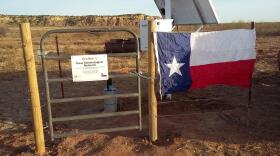Over the last 10 years, Texas has experienced a massive upsurge in earthquakes linked to oil and gas activity. Now, research is showing how that activity can wake up fault lines that were “dead” for hundreds of millions of years.
Oil and gas extraction creates a lot of dangerous wastewater. In Texas, drillers get rid of that wastewater by injecting it deep underground. Seismologists have used different techniques to show how that causes earthquakes here. Studies have looked at satellite data and correlated injection wells to quake epicenters.
Research released last week took a different approach.
“We looked at the faults that are being reactivated,” said Beatrice Magnani, a seismologist at Southern Methodist University.
Magnani and her team used a process similar to ultrasound to take images of the layers of earth under a region near Dallas-Fort Worth that has recently experienced quakes. Looking at the “deformation” of those layers, she determined that the fault lines had been inactive for around 300 million years, right up until about 10 years ago.
“These faults are … geologically dead," she said, "and they have been re-awakened by manmade processes."
Magnani said the research suggests that all inactive faults could be re-awakened by injection.
The study could also help researchers understand how to inject wastewater more carefully. It has added more support to the already-massive pile of evidence that wastewater injection has a profound impact on Texas fault lines.
The state of Texas recently launched a quake-monitoring network to learn more. But Texas oil and gas regulators remain reluctant to publicly acknowledge the connection between oil and gas activity and earthquakes here.




